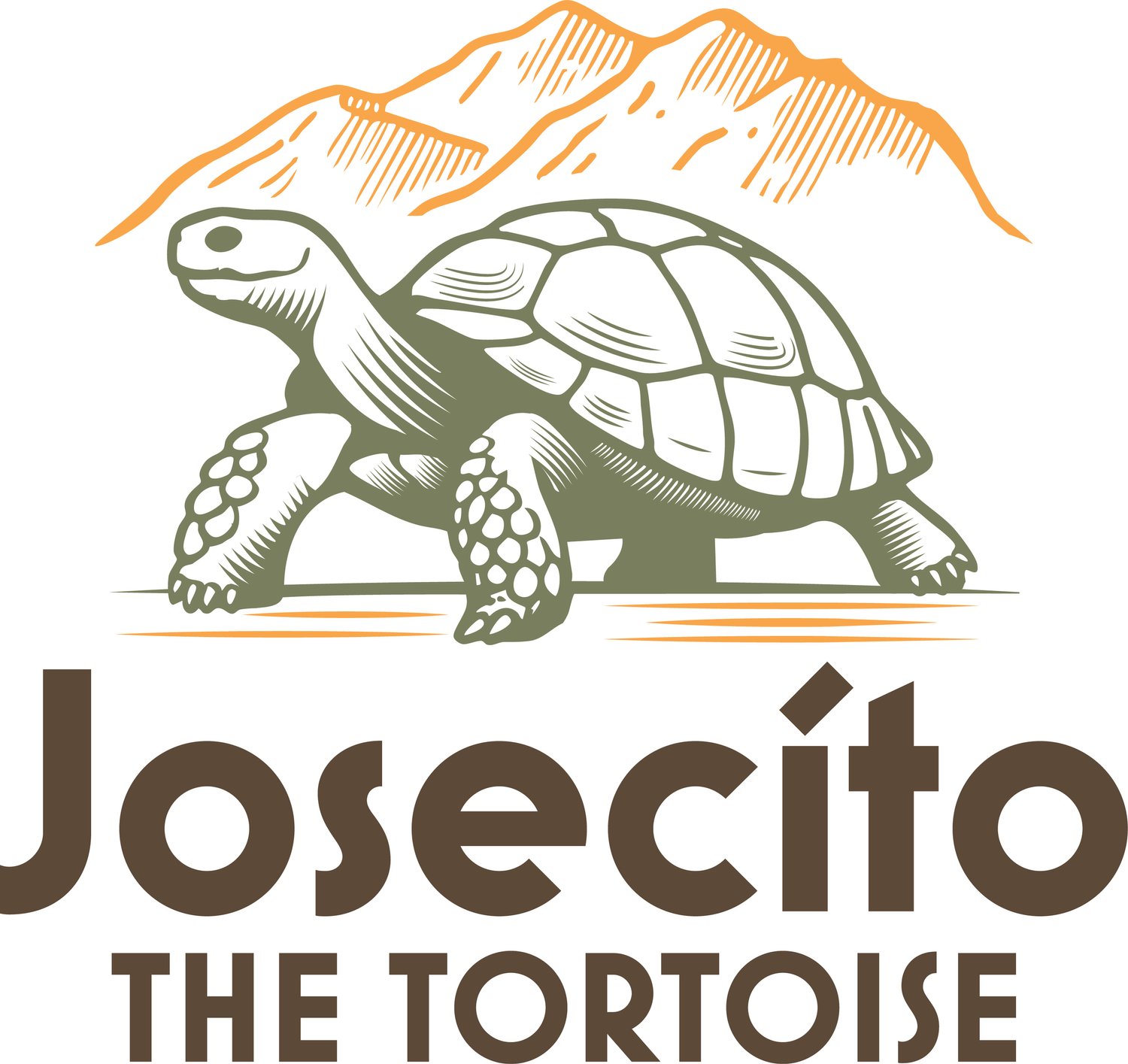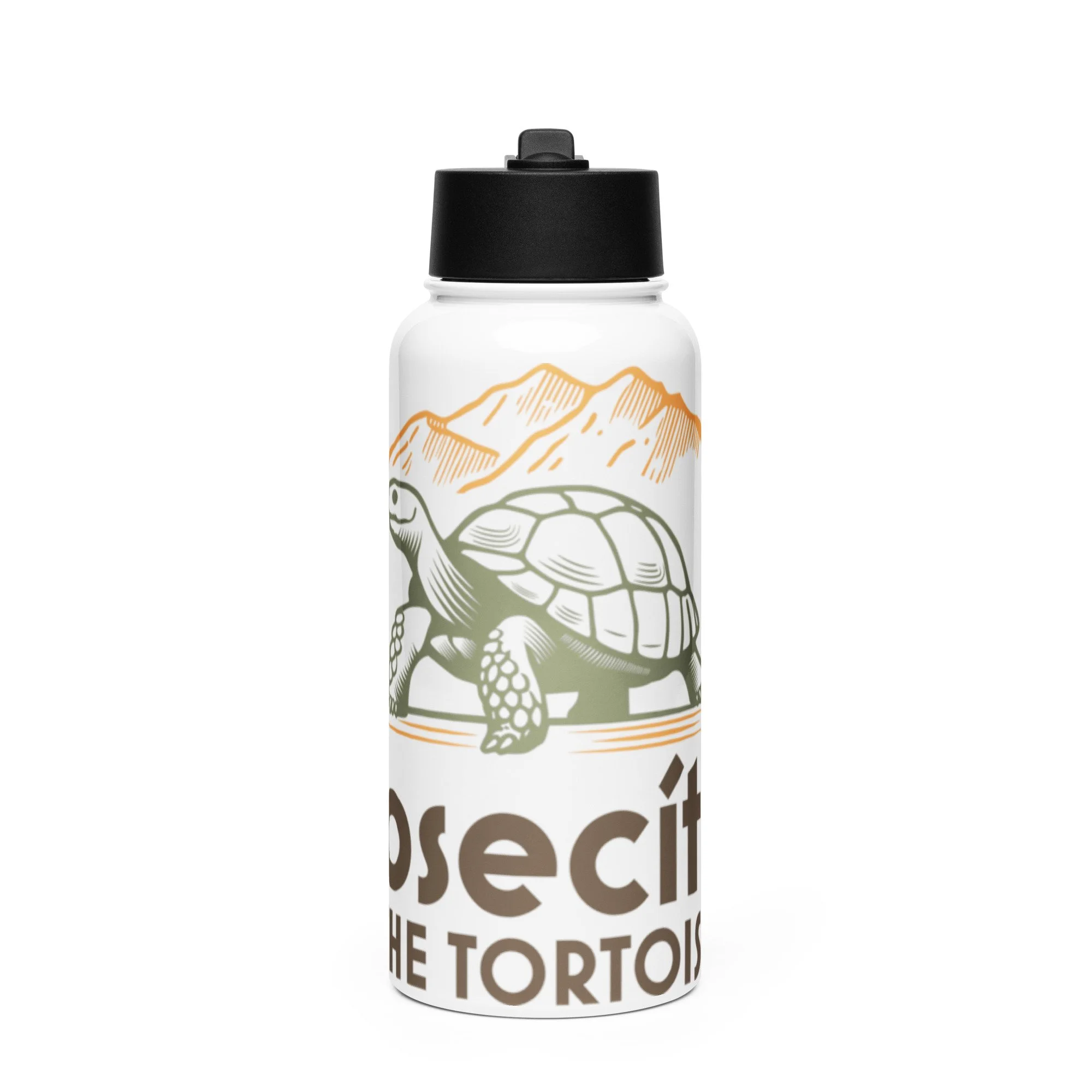FAQs
About Josecíto and the Mojave Desert tortoise
Is Josecíto actually a tortoise?
We won’t tell him you asked! But, yes. Josecíto is a Mojave Desert tortoise (Gopherus agassizii), also called a gopher tortoise – or more simply, a desert tortoise. He is a species native to the southwestern United States and designated as California's state reptile. The Mojave Desert, and thus the desert tortoise, continues into parts of Utah, Nevada, and Arizona, spanning roughly 47,000 square miles.
How old is Josecíto?
While we don’t have an exact date and time his egg hatched, a local rescue expert examined Josecíto when he was adopted in 2024 and put him at roughly 35 years old. Because we haven’t had him since birth, we instead use the day he adopted us as his birthday: March 29.
Wait, Josecíto adopted you?
Oh, you haven’t heard that story? Good Friday. 2024. You have to read the story.
How do you know for sure that Josecíto is a male?
We just asked him. jk! But kind of. If you have a tortoise in captivity, it’s pretty easy to tell by simply lifting them up and looking at their belly. If they’re flat, they’re female. But remember, if you see a tortoise randomly or in the wild, DO NOT TOUCH!
Isn’t it illegal to have a tortoise as a pet?
No! Of course not. It is illegal to kidnap a wild tortoise and make it your own, but there are lots of tortoises that are looking for loving homes! In California, all pet tortoises need to be officially adopted and registered with the California Department of Fish and Game (as Josecíto is).
If you live in the southern California area and would like to foster or adopt a tortoise, visit the California Turtle & Tortoise Club at www.tortoise.org or the San Diego Turtle and Tortoise Society at www.sdturtle.org.
Is Josecíto actually a dinosaur?
OK, so we call him a living dinosaur. But unfortunately, tortoises aren’t actually dinosaurs. While both tortoises and dinosaurs are reptiles, they are not directly related. Tortoises are part of the Testudines group, which includes turtles and terrapins, and they have a much longer evolutionary history than dinosaurs, dating back to the Triassic period around 230 million years ago. Dinosaurs, on the other hand, are part of the Archosauria group, which also includes crocodiles and birds.
Why is saving desert tortoises so hard?
Saving desert tortoises is difficult due to a combination of factors, including habitat loss, human activities like off-road vehicle use and vehicle strikes, and climate change. These threats are compounded by the tortoises' slow movement and low population densities, making it challenging to protect them in the face of ongoing development and human encroachment.
How many desert tortoises are left?
Recent estimates are that there are only 100,000 Mojave desert tortoises remaining in the Mojave and Sonoran Deserts. However, populations have shown significant decline more recently, with densities dropping from hundreds per square mile in the past to as low as 2-3 adults per square mile in some areas today.
What really happens if the desert tortoise goes extinct?
The desert tortoise is considered a keystone species of the Mojave desert, as dozens of other species depend on it for survival. For example, gila monsters eat tortoise eggs, and ravens eat small hatchlings. More than 300 different species use tortoise burrows for safety. The desert tortoise also allows a quick snapshot of the general health of the Mojave ecosystem; no desert tortoises indicate a problem. Learn and read more on the Las Vegas Sun.
How much longer does the desert tortoise have before extinction?
Once abundant, the wild desert tortoise population has plummeted due to a combination of factors, including habitat destruction from urban development and renewable energy projects, increased predation by ravens, the spread of diseases like upper respiratory tract disease, and the impacts of climate change. Short answer, we don’t know how much longer these amazing creatures will be among us.
Biologists express concern that current conservation efforts may be insufficient to halt the species' trajectory toward extinction. They advocate for more robust and immediate actions, such as stricter land-use regulations and enhanced habitat protection measures, to ensure the survival of this emblematic desert species. Learn and read more on the LA Times.
How far do tortoises travel in their life?
Mojave Desert tortoises rarely travel more than a couple of miles from their hatch place during their lifespan (National Park Service). They are highly familiar with their territory and the resources within it. Their overall home range is generally limited to about 1.5 square miles (Utah Field Guides).
New merch collection.
Meet the most famous tortoise in the Mojave—now on your desk, in your hand,
and everywhere you roam. Josecito merch is here, and it's slow-living perfection.
Before you go, check out my Insta or take a minute to learn a thing or two about Mojave Desert tortoises.
The Mojave Desert tortoise was listed as a threatened species in California in 1989 and Federally in 1990. In 2024, the California Fish and Game Commission uplisted the species to endangered.




















